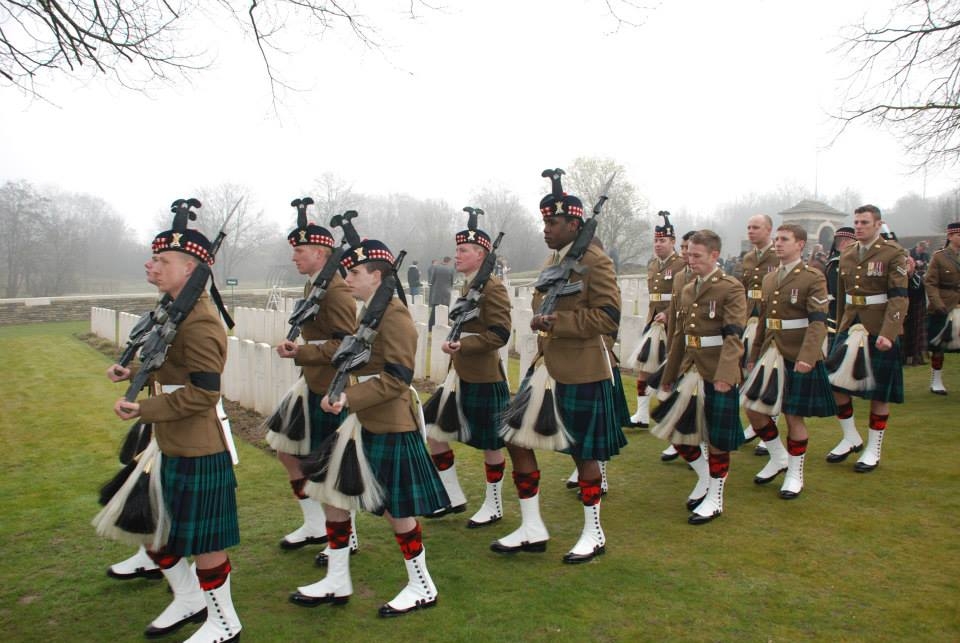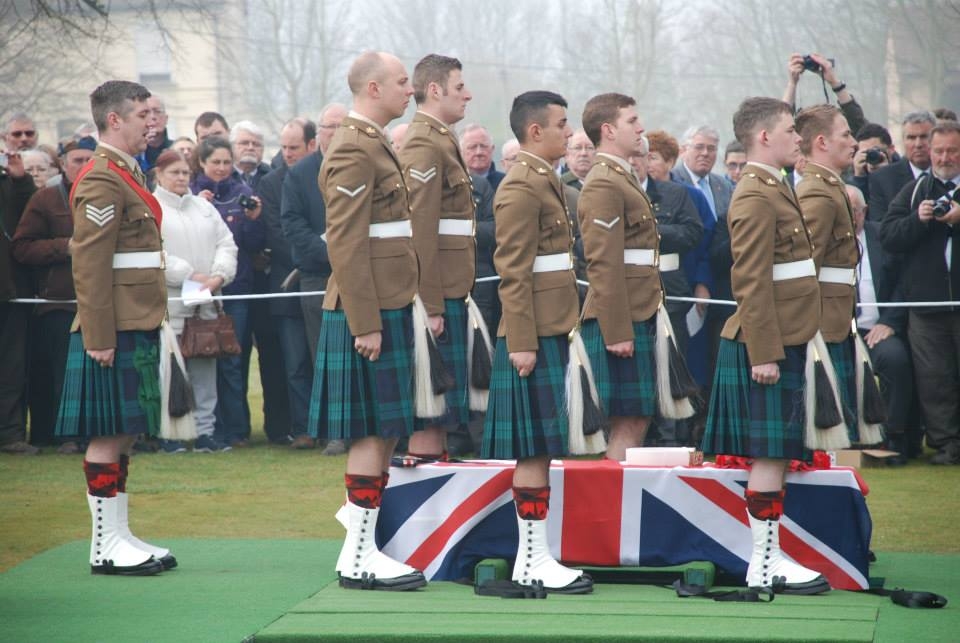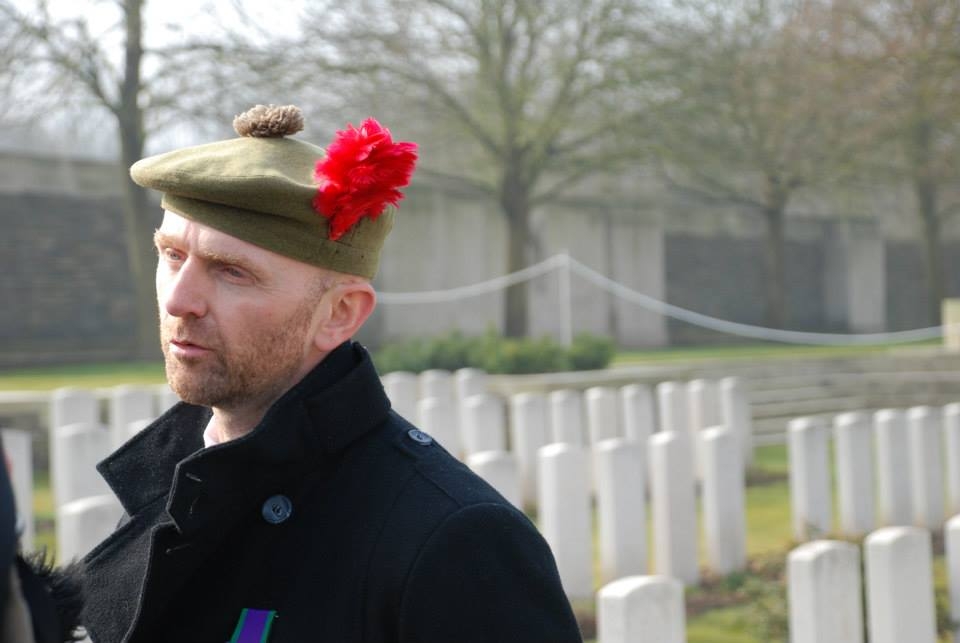Twenty British First World War soldiers were reinterred in northern France last week, almost 100 years after they were killed.
Their remains were discovered in 2010 as construction work for a new prison began near Vendin-le-Vieil, where the 1915 Battle of Loos took place.
Isabelle Pilarowski of the Arras Tourist Office told Centenary News that it was not unusual to find the remains of soldiers from the conflict, even after almost a century.
They are usually disturbed by road works or building projects, as they were in Loos in this case. ‘Jocks’ from The Royal Regiment of Scotland made up the Guard of Honour and provided the pallbearers
‘Jocks’ from The Royal Regiment of Scotland made up the Guard of Honour and provided the pallbearers
Of the twenty men found, it was only possible to identify one – Private William McAleer of the 7th Battalion, Royal Scots Fusiliers. He was from Leven in Fife.
Ms. Pilarowski explained that “it is particularly difficult to identify British soldiers from the Great War, as their dog tags were made from leather, unlike the French and Germans, who had metal ones”.
Private McAleer was the only man who could be recognised by his identity disc.
Burial
All twenty soldiers were buried with full military honours at the Loos British Cemetery.
The nineteen who could not be identified were buried beneath headstones inscribed “Known unto God”, although some of the regiments they belonged to were discovered.
A Northumberland Fusilier, six Royal Scots Fuisiliers, two Queen’s Own Cameron Highlanders and a soldier of the York and Lancaster Regiment were laid to rest alongside Private McAleer and nine men whose regiments remain unknown.
 Pallbearers prepare to lower the coffin into the ground
Pallbearers prepare to lower the coffin into the ground
Ms. Pilarowski told Centenary News that the length of time it takes to identify such remains varies dramatically, with some cases she had come across taking up to four years.
Stephen McLeod, who is the step-great-nephew of Private McAleer, attended the ceremony, which was held on the 14th March 2014.
 Stephen McLeod
Stephen McLeod
Other discoveries
Ms. Pilarowski, who has been involved in previous identifications, has had the opportunity to meet family members of deceased soldiers – an experience she says she “will never forget”.
“We are finding soldiers who fought in the Great War year on year, and expect to continue doing so. For those who are able to identify their ancestors, it is often a highly emotional occasion”.
Building projects, agriculture and weather conditions all contribute to the discovery of such remains.
Another group of twenty British soldiers were found in 2001 – men who were members of the Grimsby Pals.
They had been buried side-by-side and arm-in-arm, Ms. Pilarowski said.
Such is the interest in – and huge amount of discoveries of remains which have been made over the years – that a National Archaeology Exhibition will be held on the 9th April 2015 in Arras, to mark the 98th anniversary of the battle.
Source: Commonwealth War Graves Commission
Images courtesy of Alexandra Baye
Posted by: Daniel Barry, Centenary News
